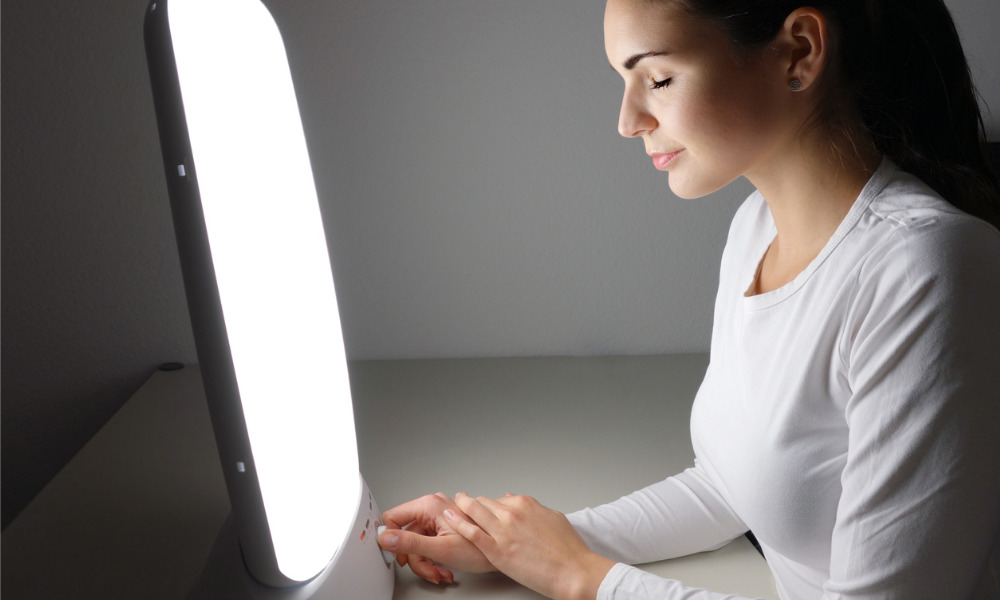How can employers support workers suffering from Seasonal Affective Disorder?

Seasonal Affective Disorder (SAD), a form of depression, affects millions of people around the world each year.
COS recently spoke with Hope McManus, Head of Health and Safety at Peninsula Canada, about SAD and what businesses can do to support employees suffering with SAD and mental health issues.
As we’ve written about previously on COS, mental health issues have been at the forefront of OHS conversations due to the impact of COVID-19 on employees’ mental health. SAD is another important piece of that discussion and something for employers to keep in mind, especially during these winter months.
What is SAD?
According to the BC division of the Canadian Mental Health Association (CMHA), around 2 to 3 per cent of Canadians will experience SAD in their lifetime. An additional 15 per cent will experience a mild form of SAD (meaning that they will experience symptoms of depression, but still be able to function with major disruptions). CMHA says that people suffering from SAD make up around 10 per cent of all depression cases.
The organization says that there are a number of groups that are at higher risk of SAD, this includes adults (though after the age of 50, the risk apparently declines), women, and people who live in northern countries or cities (due to the amount of daylight received).
“It's a type of depression, that usually comes up and is associated with the changing of seasons. So normally, this comes up quite a bit at the end of summer and going into earlier on in the year, and subsides around March,” says McManus.
“It's a sad, despairing mood, that usually is present most days […] it lasts usually the entirety of the day,” says McManus. “Another major symptom is that when you are experiencing SAD, versus just feeling down, [is that] it's a mood that's going to last for at least two weeks. And because of this mood, it's going to then start to affect a person's performance, whether it be at work, or at school, or social relationships – those are areas that will come up, that will be most noticeable,” she says.
READ MORE: Depression and mental health in the workplace amid COVID-19
How does it impact workers?
When looking at how to identify SAD with workers, there are a few things to look out for, says McManus.
“On the employer side, you're going to notice that there's a change in work habits,” she says. For example, employees may not be as motivated, or not hitting their targets. So their performance is not up to par as to where it used to be before.
“In addition to that, you'll notice that [employees] are going to be calling in sick more frequently. And that could be due to fear and anxiety – just feeling, again, a lack of motivation,” says McManus.
With COVID-19 impacting employee wellbeing, “we're having a surplus of absenteeism that we normally wouldn't be seeing at this time of year,” she says.
In addition, McManus says that employers may notice a change in the demeanor of employees. They could be more irritable or closed off when talking to their line managers or to coworkers. They could also be exhibiting mood swings that typically wouldn’t be shown on a regular basis.
She also notes that employers may notice changes in physical habits or personal hygiene which could be symptomatic of an employee struggling with SAD or other mental health issues.
READ MORE: 18 ways to improve workplace mental health
How has working from home impacted employer-employee relationships?
With many employees currently working from home, it may be harder for employers to catch signs and symptoms of SAD.
Working from home creates another challenge for employers, says McManus, as they not only have to monitor productivity but also be proactive in looking out for employees’ mental health.
“The best thing that a company can do is make sure that they have a remote working policy in place,” she says. “And they want to make sure that they're not only just arming the managers with information, but the employees as well.”
For managers, this could be checking in with staff on a regular basis to make sure that that person has a routine. Arranging a Skype or Zoom call to have a virtual face to face session will give employers a little bit more of an idea of where that employee’s mental health is at.
“It's also important to take time to not always cut to the chase and build that rapport,” says McManus. “By having a small talk, you're going to be able to understand the people that work for you. And you're going to understand, through that small talk, what's really going on […] you always want to build trust with your employees.”
By building trust with employees, employers will hopefully have more open and easy conversations around how their staff is really feeling.
Businesses should also empower their employees working from home with education and tools to help proactively manage their mental health. This could be, for example, encouraging them to make use of daylight and go for a walk outside, or setting up a healthy daily routine.
READ MORE: The rise of mental health awareness in the workplace
How can businesses and organizations help their employees?
McManus says that “the way for employers to get ahead of this is to make sure that they're building employee resilience through the creation of wellness programs.”
Wellness programs, she says, are a proactive way of having employees take care of their health before organizations use the reactive part where they’re dealing with lifetime claims.
If a company decides to do a wellness campaign centered around SAD, they could look at a few different things such as light.
“Light is important when we're dealing with seasonal affective disorder,” says McManus.
Companies may want to look at their office set up for example: is there optimal light in the office? Do we want to look at changing seating arrangements for employees to get a little bit more light during the day?
“It's also important for employers to be a little bit more flexible in how they're arranging breaks,” says McManus. “So if we know that employers are going to need that extra 10 or 15 minutes that they may just want to get aside and have a walk, well, let's make sure that we're catering to that.”
The end result, she says, is looking for ways to cater to employees and ultimately should result in higher productivity from the staff.
McManus also mentions the importance of Employee Assistant Programs (EAP) and making sure that employees have access to this program so as to better manage their mental health.
Medical treatment may also be recommended for more serious cases, including light therapy, medication, counselling and other therapies, says CMHA.





